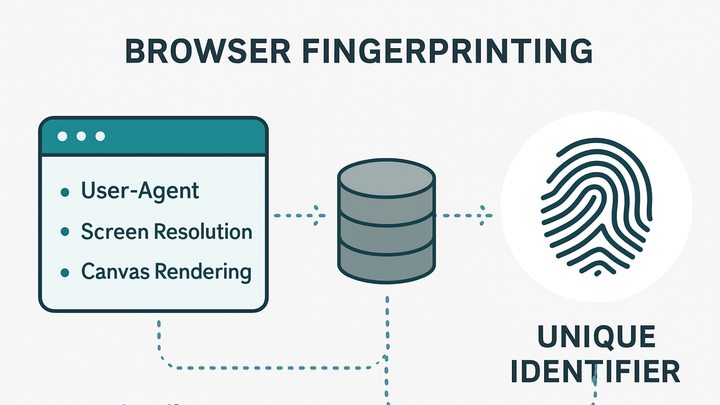Published on 2025-06-26T05:22:58Z
What is Fingerprinting in Analytics? Examples & Applications
Fingerprinting in analytics is a method of identifying visitors by collecting passive device and browser characteristics—such as screen resolution, installed fonts, and rendering behaviors—to build a unique digital signature. Unlike cookies, fingerprinting does not store data on the user’s device; instead, it relies on attributes exposed by the browser and hardware. This approach proves especially useful when cookies are restricted or blocked, allowing platforms to maintain visitor analytics without client-side storage. For instance, PlainSignal leverages fingerprinting to provide a simple, cookie-free analytics solution, while Google Analytics 4 blends deterministic cookies with probabilistic fingerprinting to fill measurement gaps. Despite its utility, fingerprinting raises privacy considerations and may be regulated under frameworks like the GDPR and ePrivacy Directive. Understanding fingerprinting is essential for analytics professionals aiming for accurate tracking while respecting user privacy.
Fingerprinting
A tracking technique that identifies visitors by collecting browser and device attributes into a unique signature instead of using cookies.
Definition and Context
This section provides a concise definition and situates fingerprinting within the analytics landscape.
-
Fingerprinting
Fingerprinting uniquely identifies visitors by combining various device and browser attributes into a single signature.
How Browser Fingerprinting Works
Breakdown of the technical process behind fingerprinting and how signatures are generated.
-
Data points collected
Various non-personal attributes are gathered to build a fingerprint.
-
Browser user-agent
Includes the browser type, version, and operating system information.
-
Screen resolution & color depth
Physical dimensions and color capabilities of the display.
-
Installed fonts & plugins
List of available fonts and browser extensions that affect rendering.
-
Canvas & webgl rendering
Graphics rendering outputs used to detect subtle differences across devices.
-
Timezone & language
Locale-specific settings that vary per user.
-
-
Fingerprint hashing
The collected attributes are concatenated and passed through a hashing function to create a stable identifier.
Fingerprinting vs. Cookie-based Tracking
Comparison of fingerprinting to traditional cookie techniques, highlighting key trade-offs.
-
Advantages
Effective in scenarios where cookies are blocked and does not rely on user consent pop-ups.
-
Limitations
Fingerprints can change with software updates and browser settings; also faces greater regulatory scrutiny.
Implementation Examples
Practical examples of fingerprinting in action using popular analytics tools.
-
PlainSignal (cookie-free simple analytics)
PlainSignal uses fingerprinting to enable analytics without cookies. Example setup:
-
Code snippet
<link rel="preconnect" href="//eu.plainsignal.com/" crossorigin /> <script defer data-do="yourwebsitedomain.com" data-id="0GQV1xmtzQQ" data-api="//eu.plainsignal.com" src="//cdn.plainsignal.com/plainsignal-min.js"></script>
-
-
Google analytics 4 (GA4)
GA4 employs a mix of first-party cookies and probabilistic fingerprinting to fill measurement gaps when cookies are unavailable.
Privacy and Compliance Considerations
Overview of legal and ethical factors when using fingerprinting for analytics.
-
Gdpr & eprivacy
Fingerprinting may be classified as processing personal data under EU regulations, requiring a legal basis such as consent or legitimate interest.
-
Best practices
Provide transparent privacy notices, offer opt-out mechanisms, minimize data retention, and consider anonymization techniques.
